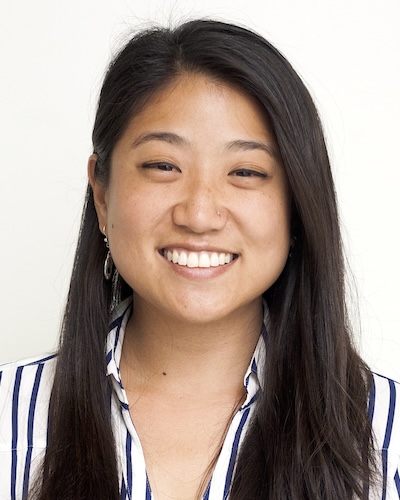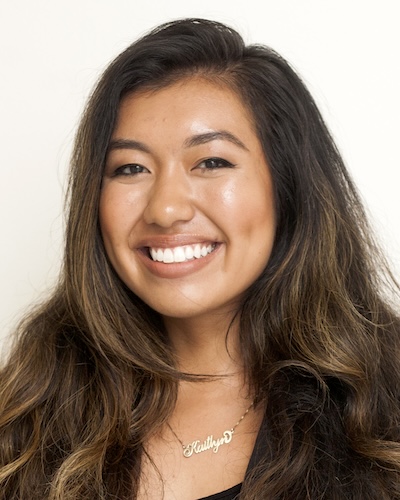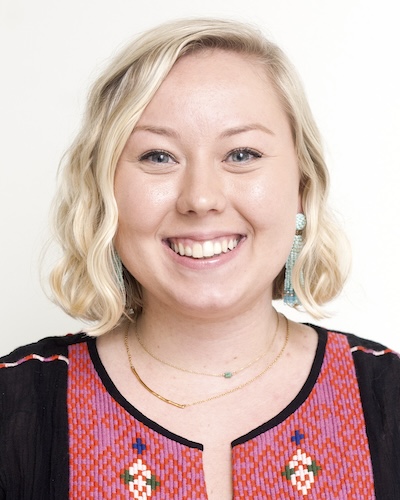Student Blog
What are OS/OT?

Keeping that Thanksgiving Train Going — Choo Choooooo! ⟩
November 21, 2017, by Erika
Classes What are OS/OT?
Jumping off of Ali’s lovely post on what she is thankful for this Thanksgiving season, I have equally been reflecting upon the last semester and the various opportunities and encounters I have experienced. While this list is by no means a complete list of what I am grateful for this season, I thought that I would limit this post to a couple things that come to mind:
- I’m thankful for my group members! I am taking two courses this semester that rely heavily on team based work- OT501: Adult Physical Rehabilitation and OT537: Occupation-Centered Programs for the Community. For both courses, our groups are set from the beginning and we work very closely throughout the entire semester. As most people know, team dynamics can typically be a gamble, but after 14 weeks together, I can honestly say, I won the JACKPOT. In both groups, every single person is inherently unique, willing to contribute, have supportive and kind hearts (surprise surprise, they’ve all chosen to pursue OT), and can laugh and joke like no one’s business. The best part of it all is that I didn’t know most of them that well going into the semester but they feel like family coming out. I am truly grateful for these beautiful people and for having the opportunity to get to know each of them better individually. They’ve brought me so much joy! Love you fams.
- I’m thankful for Adult Rehab! Like many incoming students to this program, I came in having a “good understanding” of what/where I wanted to practice. I was set on working in mental health. While that focus has not entirely shifted, I will say my interest has broadened now that I’ve learned more about occupational therapy, the various practice areas and populations they serve, as well as learning more about yourself and how I can best serve as an OT. I’m more than half way through my semester in Adult Rehab and I have to say, I never expected to be so curious and engaged in the subject matter. I had never been a physical or biological sciences enthusiast so all this content was a bit intimidating and foreign to me but with every week, my eyes have gotten bigger and my ears have perked up higher. Additionally, I was assigned to a really great Level I fieldwork placement at a Skilled Nursing Facility. My fieldwork educator was committed to ensuring that everything I was learning in the classroom, as long as it was available, I had the opportunity to see it in practice. With that said, I am grateful that every day in this program has the power to surprise you, debunk any assumptions you have going into the program, and potentially shine a light on a part of yourself or interests that you may have not ever considered.
Wishing you all a great Thanksgiving!
⋯

Thankful for Occupational Therapy and the Trojan Family ⟩
November 17, 2017, by Ali
What are OS/OT?
As this semester is winding down and I am choosing my classes for next semester I have been feeling especially thankful for being a USC Trojan studying occupational therapy. Thanksgiving coming up around the corner has also been a healthy reminder to take a step back and recognize all the wonderful aspects of my life, future profession, and school. My freshman year I was overwhelmed with too much choice in having to choose a major that would then lead to a job. And then I found occupational therapy.
This semester has been full with making plans for the future after graduation, and I feel so thankful to be at USC studying occupational therapy. At every turn there is a professor who stops class in the middle of a lecture to check in on our stress levels and give us a pep talk about how capable we are. Not only are the professors supportive and receptive to our needs, but also all of the faculty are here to help us get to where we want to be and feel good about it along the way. Whether it be walking into a professor’s office hours to ask question after question or brief conversations in the hallway when a faculty member asks “how are you?” and you know they truly want to know and help. The Chan Division of Occupational Science and Occupational Therapy is one of the top programs in the country for research and practice, but it is also a warm and close-knit community that supports its students every step of the way.
I am also thankful for finding occupational therapy because even as I feel stress and worried about my future, I have complete confidence that no matter what setting I work in or what population I choose to focus on, I will helping people. Whether it be getting somebody out of bed for the first time after having a stroke so they can brush their own teeth and hair or helping a child attend to an entire board game activity with a peer, I am grateful to get to be entering a profession that is client-centered, creative, and focuses on helping individuals live out their definition of a meaningful life. I will be making a difference in helping my clients do what is meaningful to them. Halfway through my second year of the Master’s program I keep getting wrapped up in the small details of due dates and exams, but this week has me stepping back to be grateful for being a future occupational therapist and member of the Trojan family. Fight on and Happy Thanksgiving!
⋯

I Turned 27 Last Thursday ⟩
November 13, 2017, by Bryan
Life Hacks What are OS/OT?
Maybe it is a mixture of interacting with older patients at fieldwork, dinner with my grandma for my birthday, or slowly realizing that OT school will be over in another semester, but I have been reflecting a lot on where I am going.
I know, a scary topic for us all.
From early on, my career goals were clear: find a job that provides financial stability. It is interesting how much of this mentality has shaped me today, and while I am really grateful for it, the older I get, the more I realize the importance of doing what I love. I remember receiving a card when I graduated undergrad from my cousin who was busy working on Wall Street. He is also the son of immigrant parents so can attest to a similar lived experience. I opened the card and immediately looked for the cash gift I expected. Nothing. What the heck. Should I even read the card? I was torn!
Upon reading the contents, however, I was even more surprised to reread advice I never really seemed to take seriously: follow what you are passionate about because that is what you will work hardest to be the best at. From that point forward came the discovery of purposeful paths, whether that meant running into a dead end, detour signs, or trudging through the side-brush to find another road entirely.
What am I most passionate about?
While the A+ answer might be Occupational Therapy(!), I think my greatest passion is to get to know people and help wherever I can. My career trajectory till now captures my own efforts to crystallize this very meta passion into a 9-5. I ran the 100000000m sprinting marathon of pre-med coursework believing that doctoring was the one and truest synonym for “helping others”. I utilized the beauty of storytelling to assist people find and purchase services or products that they might really need through marketing. My heart was the same all along and OT seemed like a perfect fit for it going forward.
I guess the question for you is what are you most passionate about? Does OT help you fulfill those passions? And if it does not, that is totally okay, there is so much purpose in exploring.
⋯

Keeping Up with the OTs: Moving with Motivation ⟩
November 10, 2017, by Kaitlyn
Videos What are OS/OT?
Graduate school can be stressful and at times, difficult. Juggling school, work and all the other demands of life is not always a piece of cake. In those times where I feel overwhelmed and like I have too much on my plate, I simply find ways to remind myself why I chose the path I am on now and why I do everything I do.
With that being said, I love to replenish my motivation through interactions with my patients, colleagues, classmates, family, friends, and people in everyday life. In addition to that, I’ll use the Internet as a resource to find inspiration (thank you Google and YouTube!). This past year, I attended the AOTA Annual Conference in Philadelphia and they played a video of Al Roker discussing the positive impact occupational therapy had on him and his son. I love to watch this video when I need that little push:
Here is one of my favorite quotes that encompasses my deep rooted feelings for occupational therapy as well:
“I’m an occupational therapist, an obscure profession if there ever was one. We are few and far between, maybe because we have chosen to serve people with disabilities. All disabilities. Not a glamorous endeavour, nor a lucrative one. And I say serve because we deem that in helping we see weakness, while in serving we see wholeness. We’ve opted for wholeness nearly a century ago and have been at odds with the system ever since. We don’t fix people, you see, with them we simply try to find a way to meaning, balance, and justice. I chose occupational therapy because it blends science and humanism, intellectual rigour, and compassion.”
— Rachel Thibeault
All in all, I believe that an ethical life is one that involves doing the most “good” that you can. For me personally, being an occupational therapist is a profession where I am able to do the most “good” that I can. With OT, I know that at the end of my life I can look back and say that I lived one that was fulfilling and meaningful.
I have met the most incredible people just in the short time I’ve been an OT student and I’m looking forward to a lifetime more of such inspiring encounters.
⋯

Telling People About OT: One of my Favorite Occupations! ⟩
November 9, 2017, by Caroline
Admissions What are OS/OT?
I must apologize for my long delay in blogging, but I promise I have a good excuse! My favorite part of being a Student Ambassador is speaking with prospective students about Occupational Therapy and our programs at USC. These past few weeks, I’ve been all over the greater LA area presenting at various universities and speaking with prospective students about OT and our programs. When someone asks me about OT, my immediate response is “do you have 2 minutes or 2 hours?” OT is one of my favorite topics of conversation, so the fact that I get to spread the word about OT as my job is simply the best! Believe it or not, when I was applying to OT programs my senior year of college, I didn’t know a single other person interested in or applying to OT. I managed to navigate the process by myself, but I’ve had so much fun visiting Pre-OT clubs and other student organizations at various universities and connecting with students who are as passionate about OT as I am!
In addition to traveling around to different universities to give presentations, I’ve also started giving virtual presentations to groups and universities that are a little farther away geographically, but are interested in learning more about OT at USC. I was able to connect with and present to students from my undergrad in North Carolina (Wake Forest University — Go Deacs!) which was particularly exciting for me! Technology is the best! If you’re reading this and would like to set up a virtual presentation for a group of students at your college or university, feel free to reach out to me at .(JavaScript must be enabled to view this email address) — I would love to make that happen!
We’ve also started doing Admissions Information Sessions virtually as well. We tend to hold about two Information Sessions per month on our campus here in LA, but we want students to be able to get the same information even if they can’t travel out here. I know I would have appreciated that when I was a prospective student! We already have a Virtual Admissions Information Session scheduled for March 29, 2018, so mark your calendars and check out our website for information on how to register.
As always, feel free to reach out to any of the Student Ambassadors by email or leave a comment if you have any specific questions about our experiences or want to follow-up about something we talked about in our blog!
⋯





